- Home
- stock market
- Economy
- The Wealth Gap Is Crushing America's Youth [CHARTS]
The Wealth Gap Is Crushing America's Youth [CHARTS]
Family incomes have declined for a third of American children over the past few decades.
![The Wealth Gap Is Crushing America's Youth [CHARTS]](/_next/image?url=https%3A%2F%2Fstaticbiassets.in%2Fthumb%2Fmsid-21088558%2Cwidth-700%2Cheight-525%2Cimgsize-90418%2Ffamily-incomes-have-declined-for-a-third-of-american-children-over-the-past-few-decades-.jpg&w=3840&q=75)
And forget what you heard about the American Dream. "In fact, in terms of both income inequality and social mobility, the United States is in the middle of the pack when compared to other nations, most of which are democratic countries with market economies," the authors write.
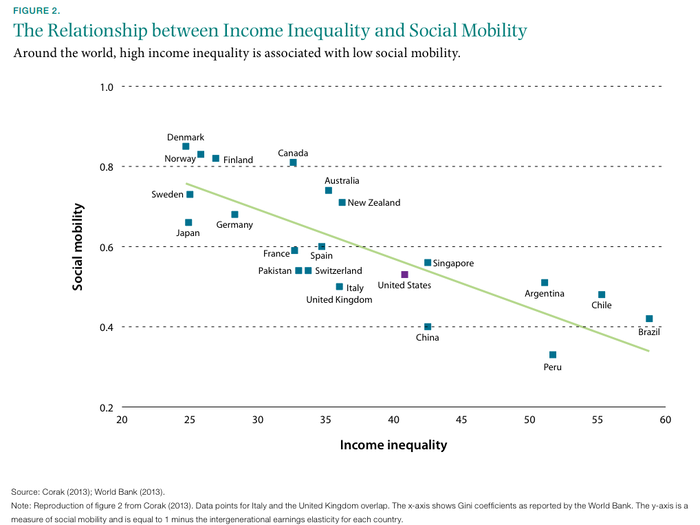
The reality is that it's even tougher for poor children to make up for their parents' lost ground. A child born to parents with income in the lowest quintile is more than 10 times likelier to end up in the lowest quintile than the highest as an adult (43% vs. 4%).
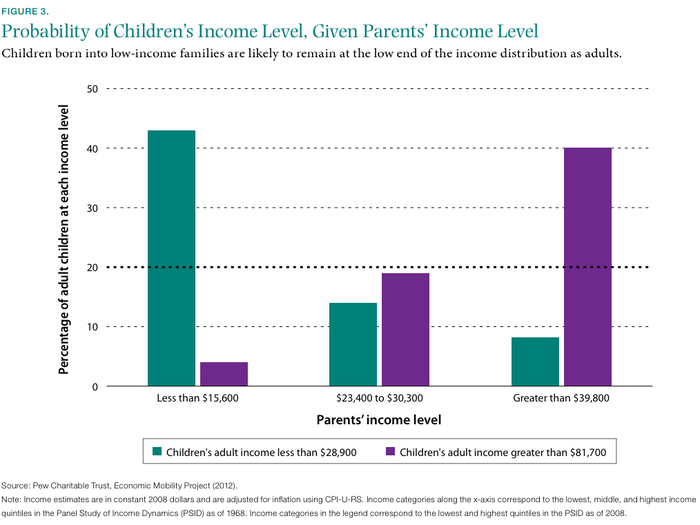
Wealthy or poor, kids have pretty similar cognitive abilities under the age of 1. But by the time they hit kindergarten, children from the highest earning households score twice as well as poor kids on literacy and math tests.
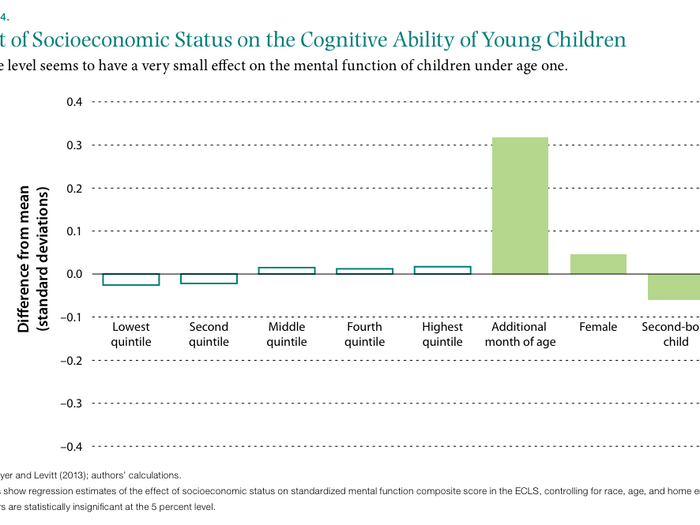
In addition to being more likely to have two incomes and parents with college degrees, wealthy families also have more money to throw at their kids' needs. They spend seven times more on educational enhancement tools for their children than low-income families ($9,000 per child per year vs. $1,300).
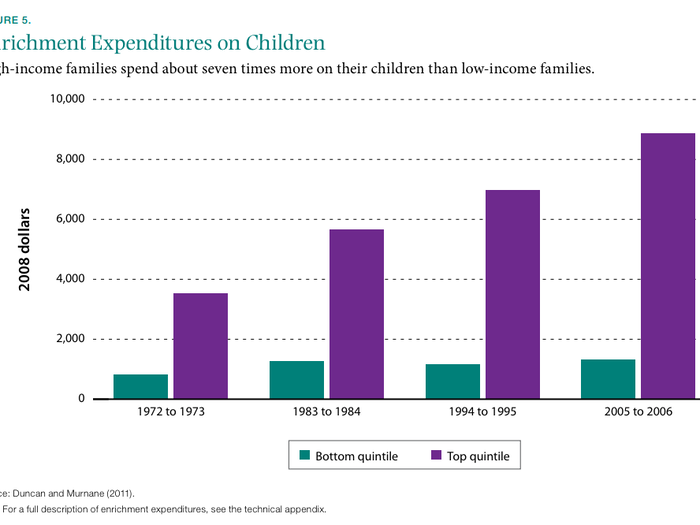
"By age three, children of parents who are professionals have vocabularies that are 50% larger than those of children from working-class families, and 100% larger than those of children whose families receive welfare," the authors note."
That extra boost goes a long way. Since 1970, the achievement gap between low- and high-income children has grown to 70%. "The gap between high- and low-income students, therefore, is not an instance of the poor doing worse while the wealthy are doing better," the authors say. "Rather, it is that students from wealthier families are pulling away from their lower-income peers."
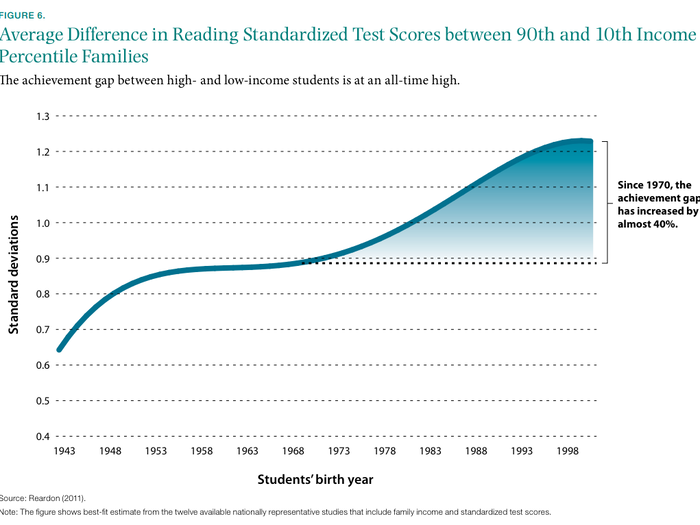
In fact, college graduation rates have soared over the last few decades. But if you really look at the numbers, you'll find that most of the growth has been enjoyed by high-income students.
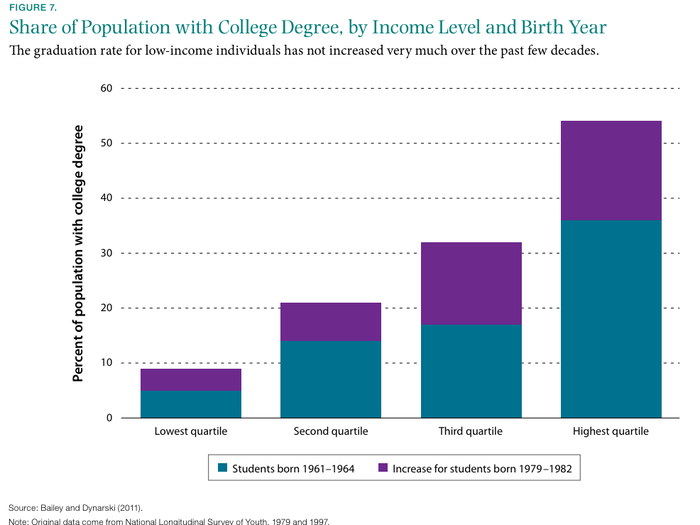
It's no surprise that the gap only widens as we home in on enrollment rates at highly competitive and selective schools. "The more competitive the institution, the greater the percentage of the student body that comes from the top quartile, and the smaller the percentage from the bottom quartile," the authors say.
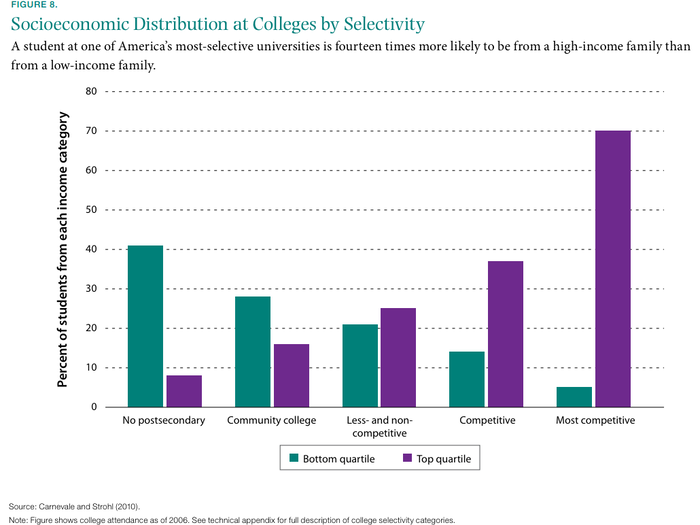
A college degree remains a low-income student's best hope of making it out of poverty and at least into the middle class.
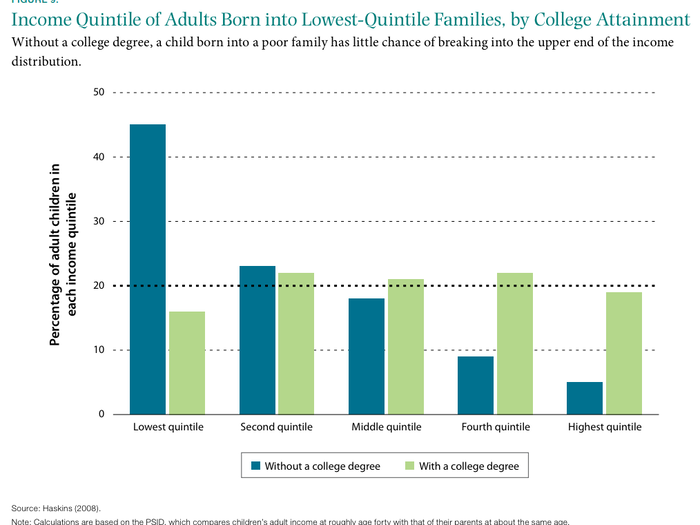
Indeed, a college degree yields higher returns on investment than just about any stock on the market.
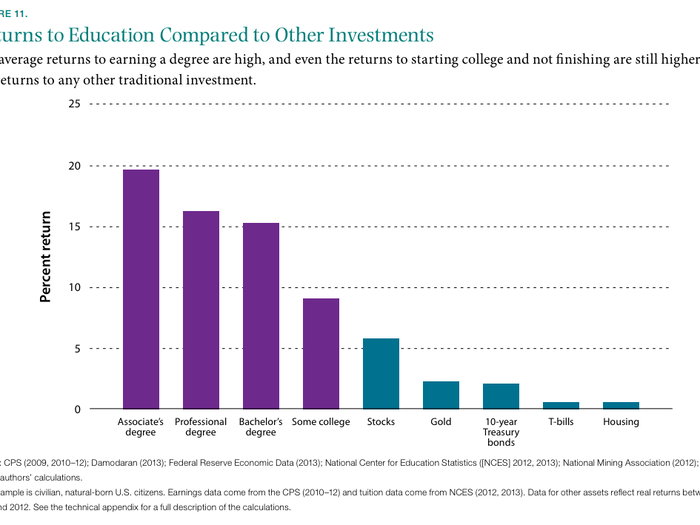
Although financial aid counteracts much of the rise in college tuition, many low-income students are intimidated by the soaring sticker price.
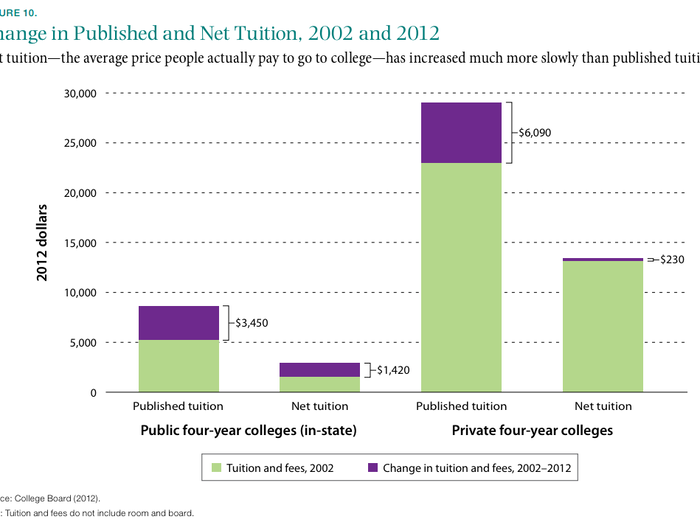
Student loans can easily ruin a student from a low-income family. Since 2007, student loan debt has eaten up a 10% larger share of household income for students in the lowest quintile.
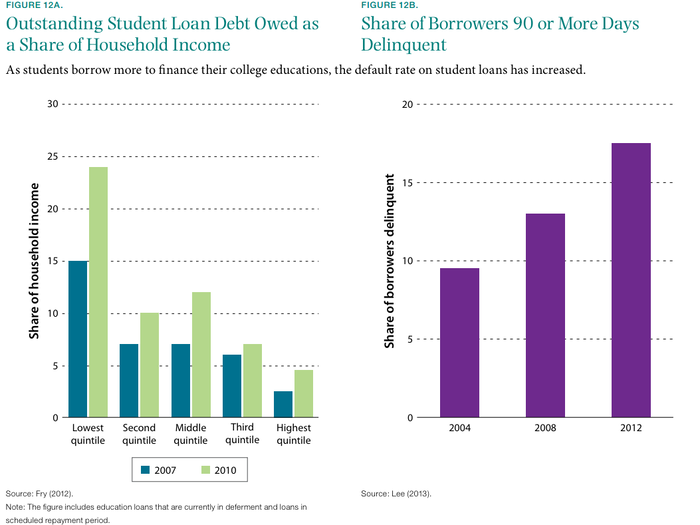
How do we bridge the gap? If the surest path to the middle class is a college degree, then the focus should be on helping more students get there. Depending on major, for every $1,000 of financial aid made available to low-income students, colleges have seen a 3 to 6% bump in enrollment. And simply helping low-income students fill out their financial aid applications increased college enrollment by 8%, costing less than $100 per student, the researchers note.
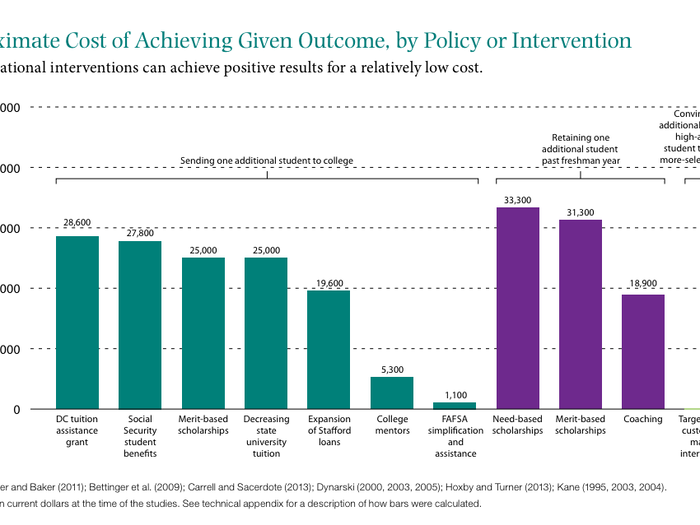
The bottom line: Knowledge is money. Here are some helpful resources for estimating the true cost of college:
CFPB: Paying for College & College Cost Comparison
FAFSA: Federal Student Aid
Popular Right Now
Advertisement
